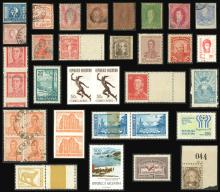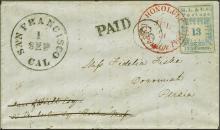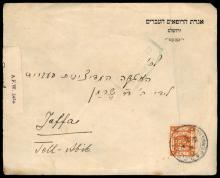Guide to Your Collection of Penny Black Stamps
Published

The Penny Black holds a special place in philately – as one of the first adhesive postal stamps, it is one of the most prized items available. Due to its popularity, it is worthwhile to understand how to collect this 1d stamp. Here’s a short guide on how to collect this kind of stamp.
One thing to note is that the Penny Black stamps were printed from eleven different plates. In order for you to identify the correct plate, you need to match the position of the corner letters and pay attention to other attributes. There are different corner letters, and the variation is there to prevent forgeries. The letters will normally start from AA that starts from the top left of the stamp up to TL in the bottom part of the item. This means that the top is your A-row, and includes stamps from AA to AL.
Specific Things to Watch Out For In Penny Black Stamps
Pay Attention to Plate Manufacture - You need to pay attention to the process in which the printing plates were made. For example, the original die, with the lower corners left blank, was printed on a flat plate of softened steel. Once the engraving was completed, the steel was hardened and impressions were made into printing plates of softened steel. The plates were then rocked into each plate 240 times. The letters at the corner were hand-punched before the plates were hardened once again. Manual punching was the reason why their precise position varies between printings.
What are Plate Letters and Retouching? It is also important to pay attention to the plate letters. There are different variations of the letters. For example, they can be doubled, weak, filled in, tilted, inverted and even abnormal. The retouching jobs made on the stamps can also serve as basis for variations. There are usually some hand retouching performed to ensure the strength of the corners. When performed by a skillful hand the retouching is not easily noticed. But careless or unskilled work left skewed corners or extended frame lines.
Roller Rocking Variety – on occasions that the transfer roller was repeatedly rocked to fortify a weak impression, varieties in printing arose. These were undetectable if the reentry was on the same exact impression, but some of the printings present a slight doubling in some parts of the design. Stamp collectors and enthusiasts call this process "fresh entry" when the re-entering was performed prior to press. When the rocking in of the impression was done using too much pressure or too fast a "shifted transfer" was caused. To identify these look for a slight doubling of the top or bottom part of the item.
Burr Rub Varieties - The burr refers to a rough piece of metal that can be seen on the hand-engraved line or a sheet that has been pressed using a roller. The burrs were manually removed using a scraper or another tool. When performed without care this could leave marks on the plate appearing on the stamps as a blurring of colors, mostly in the vertical margins of the stamps.
Guidelines, dots and transfer roller flaws - These dots are included in the plates to easily position the roller while the plate is placed. When positioned incorrectly, they were left on the plate. When positioned too close to the design there was no way to burnish them off before printing without risking damage to the design. The transfer roller flaws on the other hand are very useful to a collector, since a roller flaw will be visible on many impressions of the plate. A good example of this type of flaw is the ‘O’ flaw. This flaw can be seen in most of the stamps printed from plates 7-10. This flaw is most apparent on the stamps from the top 4 rows printed from plate number 10. There are Ray flaws too, and these are easy to spot since there are represented by a missing ray in one of the stars appearing at the upper corner.
Black Printing of Stamps – originally the 1d stamps were printed in black, and were later changed to red on February 1841, due to concern the red cancellations could be removed from the black print. With the release of the red 1d stamps, black cancelling ink was introduced. According to some reports, the plates 5 and 8-11 that were used for red stamps were used for the printing of black stamps used in the interim period before black cancellation ink could be aptly distributed.
Guide to Different Plates Used for Stamp-Making
Plate 11- This was primarily used for printing red stamps but was also used in the production of black stamps. This was used to print red stamps on January 29-30 1841, but on February 1 and 2; at least 700 black sheets were printed. The plate was again used to print red starting February 3.
Plates 1a and 1b - This plate was first used on April 15, 1840 but since it was used in its un-hardened state it was damaged almost immediately. It was taken out of the printers and was repaired by hand engraving and re-entry. Due to the numerous repairs made on this plate and the alterations the repairs caused on the prints, some enthusiasts identified this as a separate plate, which was known as Plate 1b.
Cancellations – It is also important to pay attention to the cancellations when it comes to Penny Blacks. A common tool for cancellation was the Maltese cross. Other types of cancellations come in the form of Manchester ‘Fishtail’ cross and the numeral.








